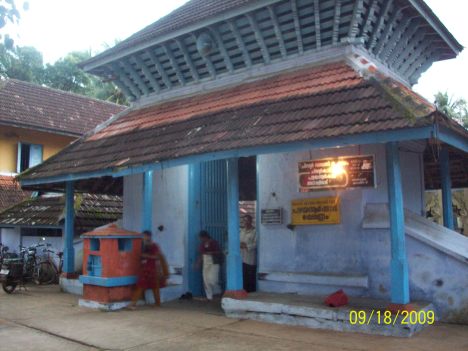
- Chittur Kavu
Chittur Bhagavathi temple is just 40 km from Pollachi. And we paid Rs.600 at the RTO check-post to get there. We had hired a taxi, Tata Sumo, from Mysore. I learnt later that tax is Rs.300 for an Indica or Ambassador. Smart taxi operators, they say, dodge tax by switching colour of their number-plate, from yellow to white. Private vehicles bearing white licence plate are not flagged down at RTO check-posts. Some taxi operators, they say, carry two number-plates – yellow and white. A white number plate helps in crossing RTO check-posts, but then those manning the RTO check-posts are familiar with cab-drivers making regular trips on the route.
Road travel permit is a convenient device adopted by state governments to raise revenue. It is not a road maintentance levy, for not all road-users pay at RTO check-posts; taxi-cabs are singled out for collection. Besides, the entry tax is not uniform in all states. The next time I visit Chittur Kavu, I wouldn’t take Tata Sumo, that too with Karnataka number plate. Trick is to opt for a Tamilnadu registered vehicle, and, find a taxi-operator who switches colour of his number-plate.
The entry tax varies with the type of vehicle; and it differs from one state to another. We paid Rs.550 at Bennari check-post to enter Tamilnadu from Mysore. Kerala charges Rs.600 for the privilege of entering the state. Tour operators say Karnataka levies the highest entry tax. As if they are doing a huge favour on tourists, Karnataka is reported to have waived entry tax for vehicles from other states during Dasara (Sept.18-29).
Filed under: Karnataka, Levy, Mysore | 3 Comments »


